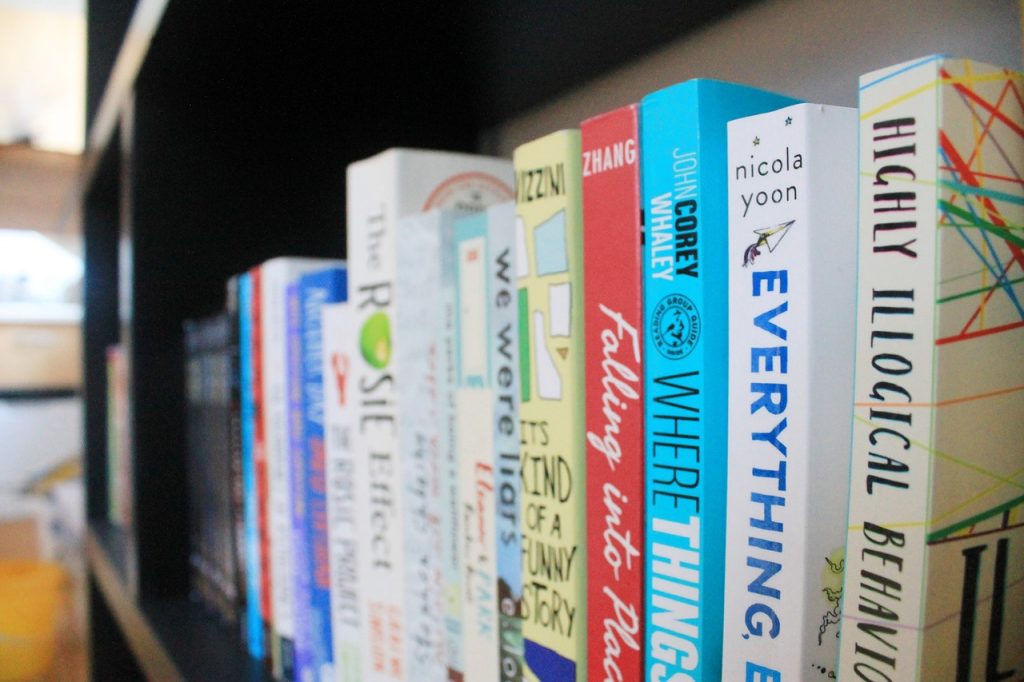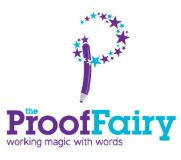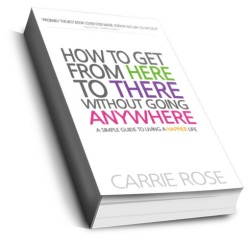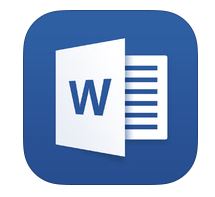When I format paperback books for my clients, the first question I ask them is “What trim size do you want your book to be?” and their answer is usually “Oh, just the normal one.” But the thing is, there IS no ‘normal’ trim size! You may think books are all the same size but if you take a look at your bookshelf, you’ll see they actually come in all sorts of dimensions. So how do you decide what trim size you should use for your book? There are lots of things to consider before you settle on one, and this blog post should help you come to a decision.
Just to confirm, the trim size of a book is the actual size of the book, as if you were measuring the front cover. There are several industry standard sizes – the most common for paperback books being 8” x 5”, 8.5” x 5.5” and 9” x 6” – and there are advantages to sticking to an industry standard. For example, Amazon’s Expanded Distribution option, which puts your book in a catalogue that other booksellers can order from, is only available for books that are a standard size. However, there are plenty of sizes to choose from (you’ll find a full list of Amazon’s standard trim sizes here ) and it’s not really a huge issue if you wanted to print your book at a non-standard size.

The best way to decide what trim size to use for your book is to look on your bookshelves for books that are similar in style or genre to your own – whether it’s a memoir, self-help guide, instructional manual, novel etc. Look for examples of those type of books, pull them out and compare the sizes. You’ll find that memoirs, novels and self-help guides tend to be roughly A5 size – what you’d think of as a ‘standard’ paperback – whereas instructional manuals are often larger, sometimes heading towards A4 size. Travel guidebooks tend to come in two sizes – they’re either slimline, so you can slip them in your bag or pocket, or oversized, to take advantage of larger photographs and maps. Lifestyle guides are often closer to a square format, again so they have space for images and graphs and charts.
Take some time to look over the books you already own, or pay your local bookstore a visit, and get a feel for how the different sizes feel in your hands, how they look and how easy they are to read. Think about where you expect people to read your book – sounds daft, I know, but it’s really important! If you think it’s the kind of book they’d read on their commute to work or in bed, it doesn’t want to be too big or cumbersome. If it’s more something they’d have open on the desk alongside their computer or will browse while they’re on the sofa with a glass of wine, a larger format book might be more useful. Will they be taking it with them when they’re on the move? Make sure it fits easily into a bag or pocket.
To a large extent, the page count of your book is dependent on the trim size you choose, and this also makes a big difference to how the book will look and feel. For example, imagine a book formatted as an 9” x 6” that has 150 pages. If you increase the trim size to something closer to A4 the page count will reduce, perhaps to fewer than 100 pages, making it a slim volume. But if you decrease the trim size to 8” x 5”, the page count will increase and the book will feel chunkier. The bigger the trim size of the book, the fewer pages it will have; it’s as simple as that. What I’m getting at here is that if your book is quite low on page count, then a smaller format will make it look thicker and a more substantial read; if it runs to hundreds of pages then it might become a bit of a doorstop at a smaller size, but more manageable if it’s a bit bigger. Even a half inch change in trim size can make a big difference to the page count!
The page count can also affect how much your book will cost to print and, ultimately, your royalties per sale – especially with Amazon, who base their print price solely on the number of pages, regardless of trim size. For example, if you decide to print at 8” x 5” and your book is 300+ pages, the print price will be higher than if you went up just an inch each way to 9” x 6”, which brings the page count down a bit and thus the price. Amazon has a great little calculator you can download and play around with to see how page count affects print price and royalties – you can download it here.
Phew! Who would have thought there was such a lot to be said about book trim sizes! If you have any questions about trim size or would like to discuss what might be the right trim size for your book, I’m always happy to talk. Just get in touch!





